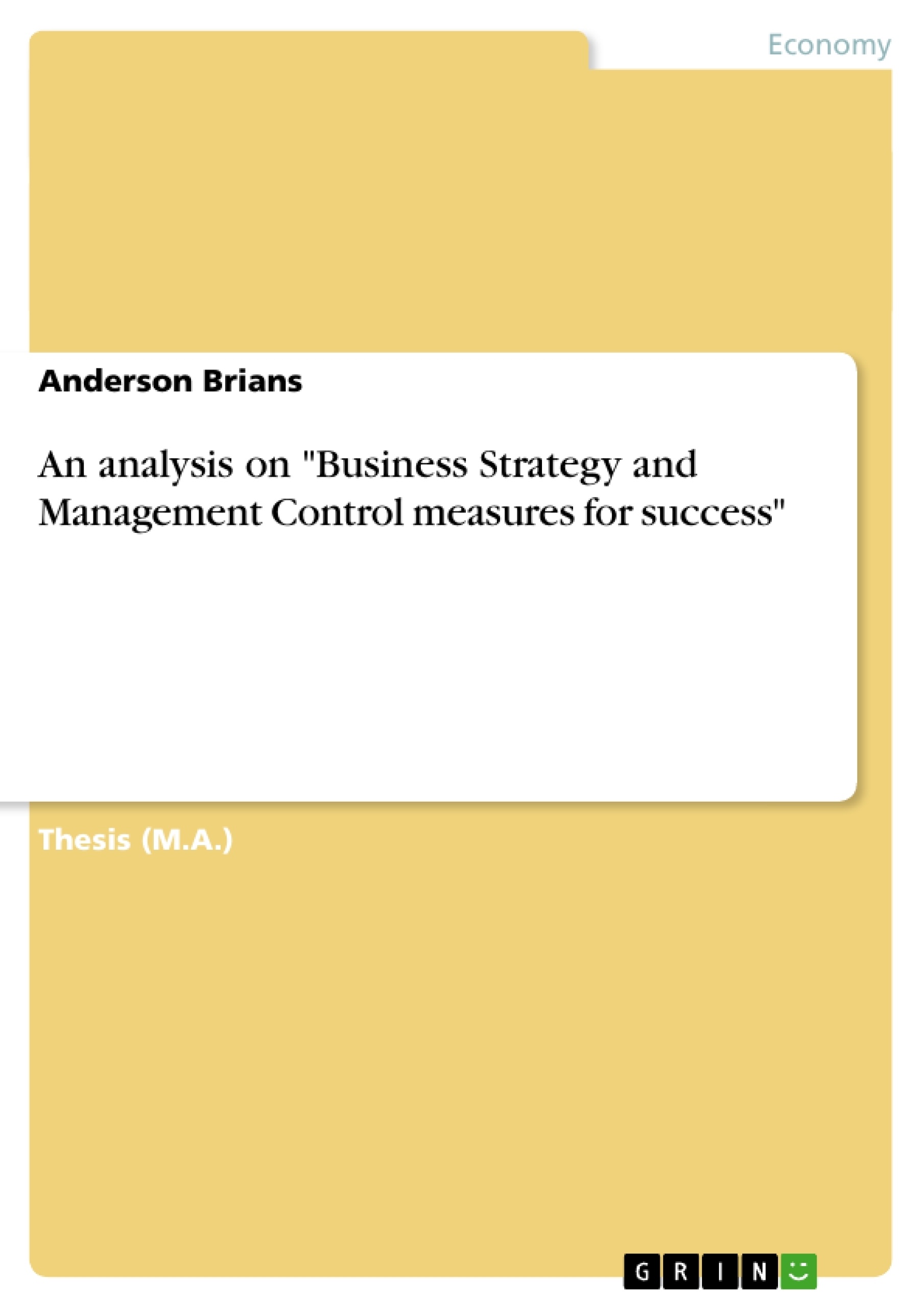This research will be an analysis ' on Business Strategy and Management Control measures for successes of business organizations. It will also look at the strategic management tools that are needed for an organization to achieve competitive advantage.
The research has been divided into parts and the first part is the introductory part which outlines and elaborates on the topic of study. The second part is the background which is the main section of the research. The background part explains further on the topic of study and also elaborates the different management tools that are applied by business organizations to achieve competitive advantage.
The literature review which gives the theoretical view from other researchers and authors on the very topic of the study and it also looks at other areas that have been covered by other previous researches.
The part on the research outlines the various methods used in data collection and how data was will be collected from the respondents.
Inhaltsverzeichnis (Table of Contents)
- Introduction
- Background of the study
- Literature Review
- Research Methodology
- Strategic Management Tools
- Introduction
- Background of the study
Zielsetzung und Themenschwerpunkte (Objectives and Key Themes)
This research dissertation focuses on analyzing the relationship between business strategy and management control measures to achieve success within business organizations. It examines the strategic management tools that organizations employ to gain a competitive advantage in the marketplace.- The impact of business strategy on organizational success.
- The role of management control measures in achieving strategic objectives.
- The identification and analysis of key strategic management tools.
- The application of management tools to achieve competitive advantage.
- The significance of strategic management in a dynamic business environment.
Zusammenfassung der Kapitel (Chapter Summaries)
- Introduction: This chapter provides an overview of the research topic, outlining the objectives and scope of the study. It introduces the concept of business strategy and management control measures as essential components of organizational success.
- Background of the study: This chapter delves into the theoretical foundation of business strategy and management control. It defines key terms such as "strategy" and "management tools" and explores the significance of strategic management in achieving organizational goals. It also discusses the role of management tools in analyzing market conditions and developing effective operational strategies.
- Literature Review: This chapter reviews existing research and literature on the subject of business strategy and management control. It examines the findings of other researchers and scholars, providing a theoretical framework for the research.
- Research Methodology: This chapter outlines the research methods used in the study, including data collection techniques and analysis procedures. It describes how data will be collected from respondents and how it will be analyzed to address the research questions.
- Strategic Management Tools: This chapter examines the various management tools used by organizations to achieve strategic advantage. It explores the different types of tools, their applications, and their effectiveness in enhancing organizational performance.
Schlüsselwörter (Keywords)
The key focus of this research is on business strategy, management control measures, strategic management tools, competitive advantage, and organizational success. The research examines the interplay between these elements and aims to identify practical insights for businesses seeking to achieve sustainable growth and performance.- Citation du texte
- Anderson Brians (Auteur), 2012, An analysis on "Business Strategy and Management Control measures for success", Munich, GRIN Verlag, https://www.grin.com/document/211923



